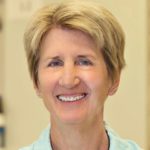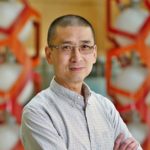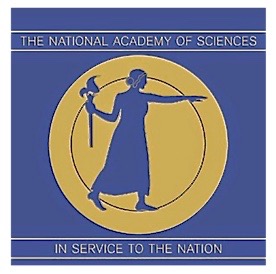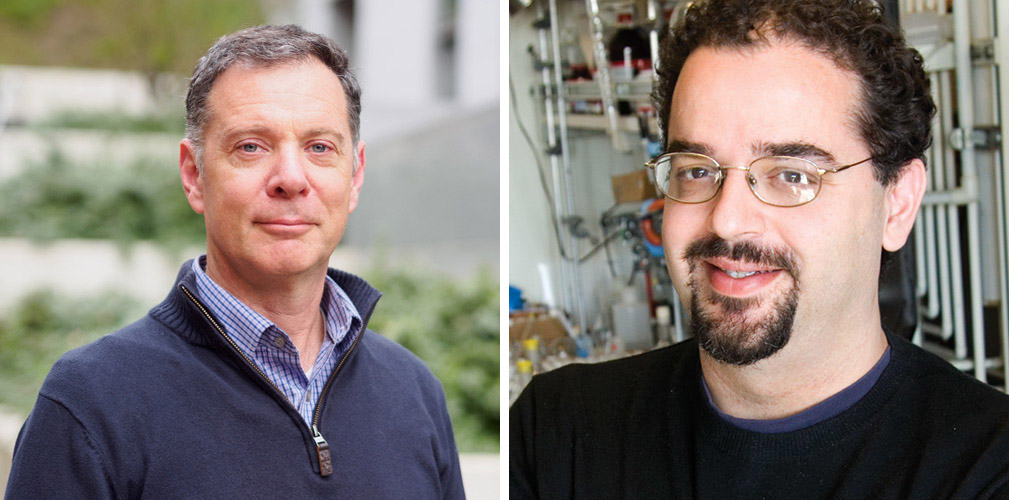Two Lawrence Berkeley National Laboratory (Berkeley Lab) scientists have been elected into the National Academy of Sciences (NAS) in recognition of their distinguished and continuing achievements in original research. James Hurley, a faculty scientist in the Molecular Biophysics and Integrated Bioimaging Division; and F. Dean Toste, a faculty scientist in the Chemical Sciences Division, join 118 other U.S.-based scientists and engineers as new lifelong members. Twenty-six scientists and engineers were elected as international members.
Each year, only about 150 or fewer researchers are invited to join the NAS. Each new member must be nominated by existing NAS members, and then must make it through a rigorous selection process that evaluates whether the candidate has made outstanding contributions to their field.
The two new members bring the number of Berkeley Lab scientists elected as NAS members to 86. Those elected this year bring the total number of active U.S. members to 2,403 and the total number of international members to 501.
James Hurley, who is also a professor of Biochemistry, Biophysics and Structural Biology at UC Berkeley, studies the interactions between proteins and cell membranes – an area of fundamental research that yields insights into all aspects of cell biology and has profound implications for medicine. His investigations have led to breakthroughs in our understanding of how HIV exploits the membranes of infected cells and have shed light on the mechanisms of autophagy, a natural self-destruction process present in all eukaryotic cells that helps prevent disease. Hurley’s lab uses X-ray crystallography, frequently performed at Berkeley Lab’s Advanced Light Source, and other analytical techniques to reveal the structures of membrane-interacting proteins and examine protein-protein and protein-lipid interactions at the atomic level.
F. Dean Toste, who is also the Gerald E.K. Branch Professor of Chemistry at UC Berkeley, explores the development of catalysts, catalytic reactions, and methods for the organic synthesis of complex molecules possessing novel structural, biological, and physical properties. He is a principal investigator in Berkeley Lab’s Catalysis Program and the Joint Center for Artificial Photosynthesis, a DOE Energy Innovation Hub that aims to find new and effective ways to produce fuels using only sunlight, water, and carbon dioxide.
In addition to Hurley and Toste, two researchers with close ties to Berkeley Lab were also elected into the 2020 NAS class.
 Janet L. Smith, who is the Associate Institute Director of the University of Michigan Life Sciences Institute, and a professor of biological chemistry at the University of Michigan, Ann Arbor. Smith’s research focuses on understanding biological processes by exploring the structures of key protein molecules. She has also contributed to the development of methods that use synchrotron X-ray sources to rapidly characterize protein crystal structures, and is a member of Berkeley Lab’s Advanced Light Source Scientific Advisory Committee.
Janet L. Smith, who is the Associate Institute Director of the University of Michigan Life Sciences Institute, and a professor of biological chemistry at the University of Michigan, Ann Arbor. Smith’s research focuses on understanding biological processes by exploring the structures of key protein molecules. She has also contributed to the development of methods that use synchrotron X-ray sources to rapidly characterize protein crystal structures, and is a member of Berkeley Lab’s Advanced Light Source Scientific Advisory Committee.
 Yifan Cheng is a Howard Hughes Medical Institute investigator and a professor of biochemistry and biophysics at UC San Francisco. His research focuses on elucidating the three-dimensional structure of large molecules using cryo-electron microscopy (cryo-EM). Cheng helped develop and test direct electron detecting cameras for electron microscopes, a technology that has revolutionized the resolution and efficiency of cryo-EM in the past decade. These cameras are based on research led by Peter Denes of Berkeley Lab and Cheng’s UCSF colleague David Agard.
Yifan Cheng is a Howard Hughes Medical Institute investigator and a professor of biochemistry and biophysics at UC San Francisco. His research focuses on elucidating the three-dimensional structure of large molecules using cryo-electron microscopy (cryo-EM). Cheng helped develop and test direct electron detecting cameras for electron microscopes, a technology that has revolutionized the resolution and efficiency of cryo-EM in the past decade. These cameras are based on research led by Peter Denes of Berkeley Lab and Cheng’s UCSF colleague David Agard.
The National Academy of Sciences, a nonprofit institution, was founded in 1863 to generate a body of nonpartisan experts and thought leaders who could offer science, engineering, and health policy advice to the federal government and other organizations.
–Theresa Duque contributed to this article.
# # #
Founded in 1931 on the belief that the biggest scientific challenges are best addressed by teams, Lawrence Berkeley National Laboratory and its scientists have been recognized with 13 Nobel Prizes. Today, Berkeley Lab researchers develop sustainable energy and environmental solutions, create useful new materials, advance the frontiers of computing, and probe the mysteries of life, matter, and the universe. Scientists from around the world rely on the Lab’s facilities for their own discovery science. Berkeley Lab is a multiprogram national laboratory, managed by the University of California for the U.S. Department of Energy’s Office of Science.
DOE’s Office of Science is the single largest supporter of basic research in the physical sciences in the United States, and is working to address some of the most pressing challenges of our time. For more information, please visit energy.gov/science.

